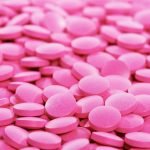Notes from the Field: April, 2020
JARED L. ZEFF, ND, VNMI, LAC
The following is not an article prepared for a medical journal. Not every statement of fact is cited or referenced. This is a commentary on the medicine, a running set of observations about practice in the field. It’s not meant to be a peer-reviewed presentation; rather, these are notes and thoughts from a practicing naturopathic physician, a primary care doc in general practice.
Neurology & Pain Medicine
A Pattern of Intervention
Every case, every patient, is different. Conventional medicine is based upon treatment of a diagnosis, based upon “best practices” and “standards of care,” and uses treatment that is presumably “evidence-based.” Certainly, variations in patient presentation and response are considered and will modify treatment. But, in general, medicine is based upon a simple and elegant paradigm, which is to diagnose and treat disease. This defines a 2-step process: first – diagnosis; second – treat, based upon the diagnosis. Medicine is defined by this paradigm. But this is not what the “Vitalist” naturopathic physician does, not generally. Diagnosis is important, and any naturopathic physician is trained to diagnose disease. However, in contrast to conventional medicine wherein the diagnosis is treated, a Vitalist would be expected to treat the patient rather than the diagnosis. In conventional medicine, for any specific diagnosis there may be a range of treatments, but they are, more or less, specific to the diagnosis. A Strep infection demands an antibiotic to which the Strep is sensitive. If one were to look at multiple sclerosis, there is a list of drugs one would consider, either based on specifics of the disease, or possibly the specifics of the patient, including factors like kidney or liver health, allergic potential, etc. For the Vitalist, the traditional naturopathic physician, the specifics of the patient take precedence over the disease diagnosis.
Anyone who has followed these “Notes from the Field” should be struck by this observation – that regardless of the disease, the treatment follows essentially the same pattern. I look to identify and remove or moderate causes and disturbing factors. I stimulate the Vis with hydrotherapy, homeopathy, and occasionally other modalities. I support the affected systems, primarily with botanicals and specific nutrients, or possibly specific low-potency homeopathic medicine. I work to correct structural integrity, primarily in terms of muscle and joint tensions and alignments. Occasionally, I will use higher-force interventions, even pharmaceuticals, but I like to think this is rare. I follow this same pattern regardless of the diagnosis, with the exception of addressing acute concerns acutely, though usually with homeopathic medicine.
A Case of Multiple Sclerosis
As the theme of this issue is pain and neurological disease, let me illustrate this by referencing a couple of cases that fall into these categories. A few days ago, a young woman, aged 20, came to see me. She had been diagnosed with multiple sclerosis (MS) last September, after an acute onset of optic neuritis in August, in which her right eye lost vision over the course of several days. She went to the ER. The MRI indicated lesions on her right optic nerve as well as the white plaque lesions typical of MS in several areas of her brain. Follow-up lumbar puncture demonstrated typical MS findings, but all other labs were normal. She was put on high-potency steroids until the blindness remitted. She was then prescribed teriflunomide for 6 months. When a follow-up MRI indicated no improvement in the lesions and a slight worsening, her neurologist concluded that the medicine she had prescribed for the patient had not worked, and considered an alternative. While the neurologist was pondering what to do next, the patient sought the input of a naturopathic doctor.
I began the case as I typically do, first developing information on the presenting complaints, then doing a detailed dietary assessment, then a physical exam, a detailed review of systems, a social history, a detailed year-by-year medical history, and a history of major traumas or stresses. She had come in with her sister, and both sat in my office while I went through all of this. During this time, the young woman sat in her chair in an apathetic state – a potential presenting symptom of MS.1 As I was taking her history, there was no animation, no smile, no expression, just a flat affect. At the conclusion of this information gathering, which took about an hour, I gave her a homeopathic medicine. Within 30 seconds, she began to smile, then laugh a bit, then become quite animated. Such changes suggest to me that the medicine is effective, and these are the kinds of responses I look for when giving a homeopathic medicine. I sent her home with that remedy to take daily in the 1LM potency, as well as a digestive bitter tonic, dietary recommendations, a set of drainage remedies to help clear the toxicity of the MS medicine, and a recommendation to begin taking 3000 mg of fish oil daily. I am considering adding curcumin. It seems obvious, but the literature on this is sketchy.
She will presumably follow my instructions for a month, then I will see her again and assess where we are. I expect that as she pursues the dietary changes, the bitter tonic, and the drainage remedies, her inflammatory load will decrease and we will see evidence of that. Based upon what we see, I will institute the next step, including curcumin, alpha-lipoic acid, and N-acetylcysteine (NAC). I will reassess and possibly change the homeopathic medicine.
This case is brand new, and I have no real response to report, except her delightful response to that first remedy.
What is Multiple Sclerosis?
MS is a difficult disease. We can describe it through its lesions, a few other diagnostic criteria, and its symptomatic effects. However, it is a diagnosis of exclusion, for the most part, based on MRI findings, cerebrospinal fluid findings, occasionally a positive lab such as a JC virus (the above patient was negative), and on not finding other causes for these findings. So, symptoms, inflammatory CNS lesions on MRI, and CSF findings, but there is no definitive test. What causes MS? One of my earliest MS patients told me that she worked in a viral lab, that everyone in the lab came down with MS, and that several had died already. From that I concluded that, at least some of the time, a virus is involved. I have had mixed success in dealing with this problem. I have reversed some cases, slowed some, cured some, and had no effect on some. I have had several cases in which the follow-up MRI showed a resolution of the plaques. In general, what we are dealing with is an inflammatory condition in which demyelination occurs due to inflammation and scarring in the tissues of the brain and spinal cord.
A More Developed Case of MS
In early June of 2014, I saw a 44-year-old woman who had been symptomatic since the age of 15. Her symptoms began with heat intolerance. She said that she had always been in pain. Ten years prior to our visit, she had an MRI that demonstrated typical MS lesions on her brain. One year later, she became blind in one eye due to optic neuritis, which cleared with steroid treatment. She presented with deep fatigue and poor sleep, and said that she had never felt “good.” Her migraines began at age 6. She was in constant pain and always itchy. She was dizzy all the time. Sometimes she would slur words. She occasionally had a paralysis, where she could neither move her legs nor stand, or her legs would suddenly fail, causing her to fall. She suffered some intermittent cognitive weakness.
Physical exam demonstrated a weak pulse, normal temperature, and normal blood pressure (110/75 mm Hg). On abdominal palpation, she was quite tender. She showed signs of stomach, pancreas, liver, and spleen reflex tenderness, with a 4+ painful pelvic reflex. She had severe nystagmus. She had palpable thyroid nodules. She had a very positive urinary indican (4+), demonstrating a high level of digestive proinflammatory toxemia.
My assessment included a spastic MS, weak adrenal function, poor digestion with significant toxemia, and migraines. My treatment included dietary recommendations based on Dr Carroll’s method (she had an egg, milk, and gluten intolerance, with a fruit/sugar combination intolerance); a single dose of Tuberculinum 200C; 300 mg adrenal cortex each morning; humic and fulvic acids (30 drops with meals); a bitter tonic with meals (equal parts Gentiana lutea and Scutellaria lateriflora); and daily constitutional hydrotherapy.
Follow-ups & Outcomes
I saw her 1 month later, in early July. She said she was doing “really good.” She had lost 10 pounds on my dietary recommendations. Her energy and sleep had improved. She still had shooting pains, but not the constant pain she had become so used to. The numbness in her hands was slowly improving. Her frequent migraines had substantially reduced; she only had 1 that month. She reported being hungry, which was unusual, and her constant sense of nausea was gone. The constant itching had stopped. The dizziness had become more intermittent, clearly worse with heat. She reported no leg failure during the previous month. Her digestion had dramatically improved, and she said she could really feel any dietary error.
I was quite impressed by her improvement. I continued her regimen with a slight increase in the adrenal support and cessation of the humic and fulvic acids.
I heard from her by phone 4 weeks later. She was experiencing shock-like pains up and down her spine. She felt an unusual anxiety. Her vision had weakened, and she had increased dizziness. Her sleep had worsened. Her symptoms were unusually left-sided. I sent her some homeopathic Lachesis 30C, and told her to report after the first dose.
I saw her a week later, in early August. She presented with double vision, a headache, and significant emotional irritability. She noted that all muscle cramping had disappeared since starting with us, and she had now lost 15 pounds, but her leg strength had worsened. She thought that all the problems arising during the past month had been due to dietary error, but she found the diet hard to follow. Pain had returned. The Lachesis had helped the brain fuzziness and the spinal shocks.
I had her start alpha-lipoic acid and NAC, and I put her back on the humic/fulvic acids. I added 1 grain of USP thyroid, 600 µg iodine solution daily, and betaine HCl with meals along with the bitter tonic. I gave her a single dose of Sepia 200C, after which she felt calmer, her eyes straightened, and her double vision cleared. She had an upcoming appointment for a thyroid ultrasound, scheduled by her MD.
I saw her again in early September, 1 month later. She had run out of the adrenal cortex and said that she had lost her mind without it. She got some from a health food store and felt instantly better. She noted that when she mixed fruit with white sugar, she got an instant migraine. The double vision was much improved, though occasionally was a problem. She was no longer irritable. She reported an immediate difference taking the thyroid support, which also seemed to improve her sleep. She noted that she was still taking the Lachesis, as it really helped her; she often took a dose 3 times daily. She said she had experienced no muscle cramping or spasms since she walked into our office. Her anxiety was way down. She had been taking an anti-anxiety medicine 3 times daily, but now took it only occasionally. She said that her MS symptoms were substantially better since coming to see us.
I did not need to see her for a while, so I scheduled an appointment for 6 months out. She was instructed to call if she got any worse. I saw her again in early April, about 7 months later. She was deeply exhausted and in a lot of pain. She had a bladder infection. Much of her pain was coming from a calcium deposit in her shoulder. She noted that the MS was very much improved and that, overall, she functioned much better and had a lot less pain. I gave her a dose of Berberis 30C, which eased her bladder discomfort. I also gave her Calcarea carbonica (6C 3 times daily) to help “drain” the calcium deposit. I gave her a botanical combination to resolve the bladder infection: Chimaphila, Uva ursi, Equisetum, Juniperus, and Althea, equal parts, to be taken 30 drops in water 4 times daily. She notified me the next day that the bladder was much improved and that the shoulder pain was easing. I asked to see her again in 4 months unless something new came up.
I did not see her again for 9 months. She was complaining of fatigue but was otherwise asymptomatic for MS. The fatigue was due to a new baby. She had 2 other children, and was tired. The pregnancy and delivery were uneventful. I treated her for adrenal fatigue.
She returned 4 months later. She was having an MS exacerbation: pain that began in her feet and was moving up her legs. She had slurry speech. She reported that she had not been following her diet, which I could see from my examination. Based on her symptom picture, I prescribed Phosphorus 1LM, to be taken nightly. She called me 6 weeks later to report significant improvements in pain and energy. She thanked me for “curing” her MS.
Was the MS cured? If she eats against our recommendations, symptoms will start to recur. She has not had any further MRIs, so I do not know what that would show. I cannot claim a “cure,” just report that the severe symptoms she presented with 2 years prior were no longer troubling her. What we did was to reduce the toxic proinflammatory load in her body and stimulate self-healing with hydrotherapy and homeopathy. I have seen her several times since, and she has had no recurrence of MS symptoms over the past 4 years.
Closing Comments
This second case is how it usually goes. It takes a year or 2, with gradual improvement. As I said earlier, some patients see no improvement. But the capacity of the body to heal itself is profound. It is why I like to go to work each day and why I do not want to retire. This is too much fun. It is also deeply gratifying to participate in the Vis Medicatrix Naturae.
Respectfully,
Jared L. Zeff, ND, LAc, VNMI
Reference:
- Beers MH, Porter RS. Merck Manual. 16th Edition. Boston, MA: Merck Research Laboratories; 1992: 1489.

Jared L. Zeff, ND, VNMI, LAc, is a licensed doctor of naturopathic medicine and a licensed acupuncturist. In addition to functioning as Medical Director at the Salmon Creek Naturopathic Clinic in Vancouver, WA, Dr Zeff teaches on the faculty at National University of Natural Medicine in Portland, OR, where he was also Dean from 1988 to 1993, and holds a professorship in Naturopathic Medicine. Dr Zeff is a graduate of the University of California, NCNM, and the Emperor’s College of Traditional Oriental Medicine. He, along with Pamela Snider, is the author of the AANP’s Definition of Naturopathic Medicine, and the Therapeutic Order concept.










